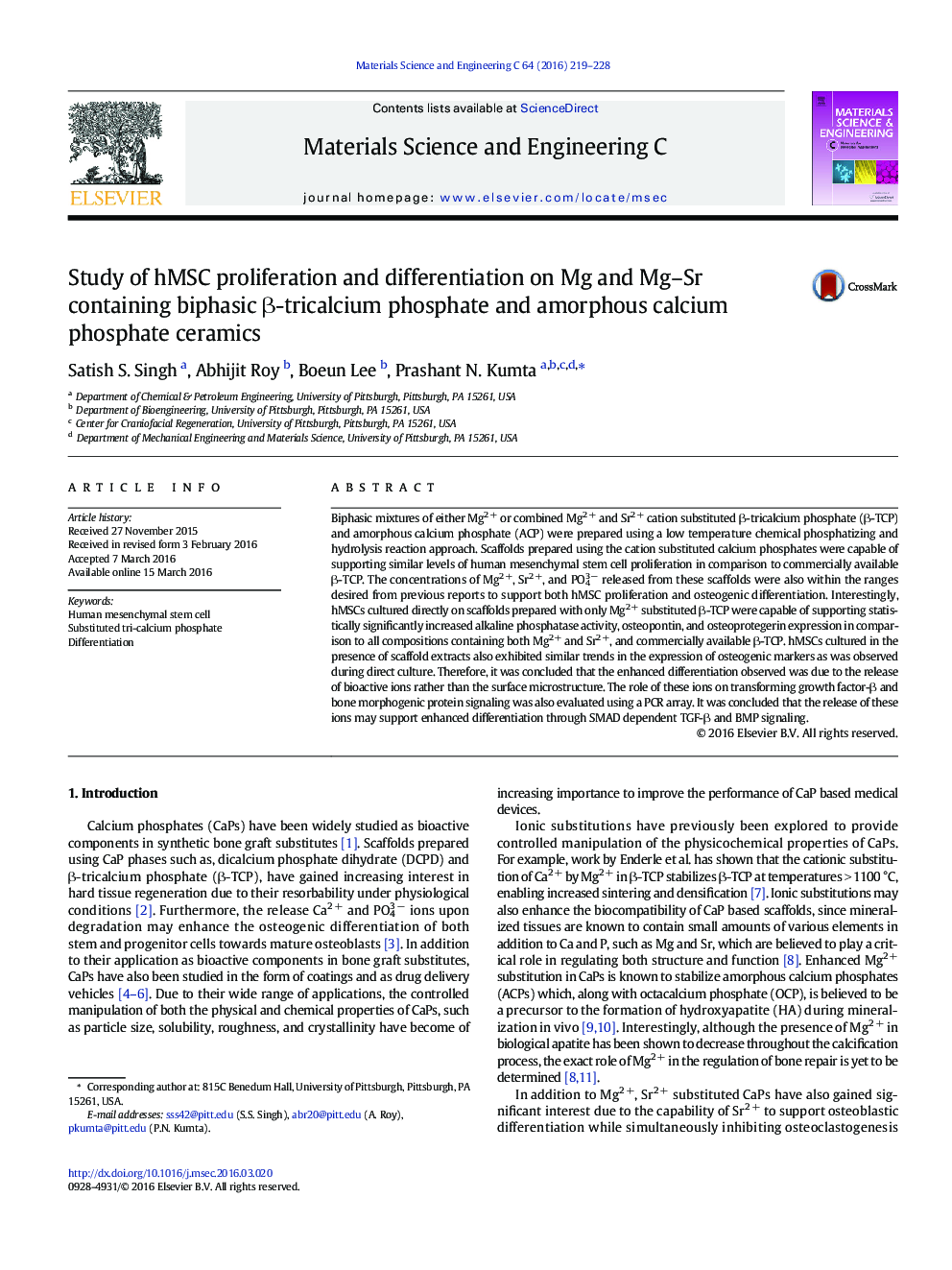| Article ID | Journal | Published Year | Pages | File Type |
|---|---|---|---|---|
| 1427953 | Materials Science and Engineering: C | 2016 | 10 Pages |
•Synthesis of Mg and Mg-Sr containing biphasic beta tricalcium phosphate ceramics•Magnesium substitution influences ALP activity compared to strontium content.•Solution extract plays a more dominant role on hMSC differentiation.•Direct and indirect Mg and Mg-Sr TCP culture show similar OPG and OPN expression.
Biphasic mixtures of either Mg2 + or combined Mg2 + and Sr2 + cation substituted β-tricalcium phosphate (β-TCP) and amorphous calcium phosphate (ACP) were prepared using a low temperature chemical phosphatizing and hydrolysis reaction approach. Scaffolds prepared using the cation substituted calcium phosphates were capable of supporting similar levels of human mesenchymal stem cell proliferation in comparison to commercially available β-TCP. The concentrations of Mg2 +, Sr2 +, and PO43 − released from these scaffolds were also within the ranges desired from previous reports to support both hMSC proliferation and osteogenic differentiation. Interestingly, hMSCs cultured directly on scaffolds prepared with only Mg2 + substituted β-TCP were capable of supporting statistically significantly increased alkaline phosphatase activity, osteopontin, and osteoprotegerin expression in comparison to all compositions containing both Mg2 + and Sr2 +, and commercially available β-TCP. hMSCs cultured in the presence of scaffold extracts also exhibited similar trends in the expression of osteogenic markers as was observed during direct culture. Therefore, it was concluded that the enhanced differentiation observed was due to the release of bioactive ions rather than the surface microstructure. The role of these ions on transforming growth factor-β and bone morphogenic protein signaling was also evaluated using a PCR array. It was concluded that the release of these ions may support enhanced differentiation through SMAD dependent TGF-β and BMP signaling.
